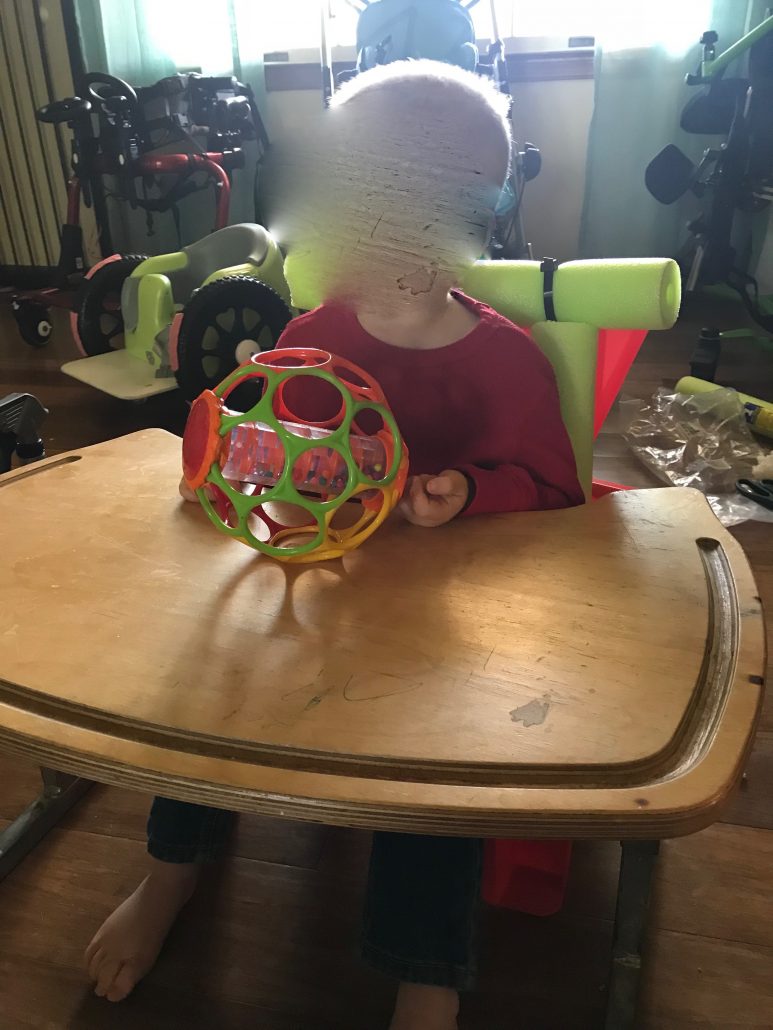DIY Adaptive Summer Seating
Equipment for individuals with special healthcare needs have come a long way. The field is always evolving to higher levels of performance and patient friendly options, but the problem generally still exists that many items are bulky, heavy, and expensive.
A family I work with in early intervention is well equipped with equipment to ensure that their daily activities as a family are as easy as possible, including adaptive seating and mobility options for community outings, playtime, and daily routines like bathing and eating.
With spring finally deciding to show up around here, this family (like many) is busy planning more ways to enjoy time together outside. One area they identified as a challenge was helping their son to sit on their deck and at the park or beach. Yes, they are fortunate to have specialized strollers, but the reality is that for a quick trip, something light or something that doesn’t take up the whole trunk was desired.
Today during our session, for under $10, his mother and I created something that filled the need for his family. If you or someone you know could benefit from something similar, we are happy to share what we did and what we learned.

Supplies:
1 simple plastic chair ($5):
TIPS:
Fit to size for your child.
We preferred one with the bottom lower than the knee area (to prevent sliding).
Highly recommend a chair with slits to help with attaching supports.
2 Pool Noodles ($1 each).
Scissors to cut noodles.
Two bags of large zip ties ($1.87 each).
Plastic or wire cutters to trim zip ties once attached.
Assembly:
- We chose to start with the child in the chair and observe his posture. Where did he struggle to maintain neutral and upright positioning?
- With him in the seat, cut noodles to accommodate his size and weaker areas. For him this included: back of head, on each side of the trunk under arm pits to base of hips (vertically), on sides of lap from knees to hips (horizontally), a smaller piece on top of these horizontal pieces to support the elbows as needed (these were added after the photo shown above), and a small piece in between the legs as a pummel to prevent sliding.
- Attached noodles with zip ties by lacing through chair slits (note: we realized after the fact, but it would be recommended to have the fastener part of the tie on the backside of the chair to prevent rubbing/irritating the skin).
- We attached a loose scarf of moms through slits and around his upper trunk, not as a firm support, but a light reminder for him to avoid slouching.
We were thrilled with the results and so was he! With an adaptive tray he could easily access his I-pad (used for vision work and communication) in his new “desk!” His mom and I were quickly able to identify many potential uses – kicking in the baby pool, outdoor movies, on the sidelines at siblings games, at grandma’s house!



We believe play keeps us all happy, healthy, and smart! When I can help adapt something simple to make joyful activities easier for families, it’s just a really good day.

